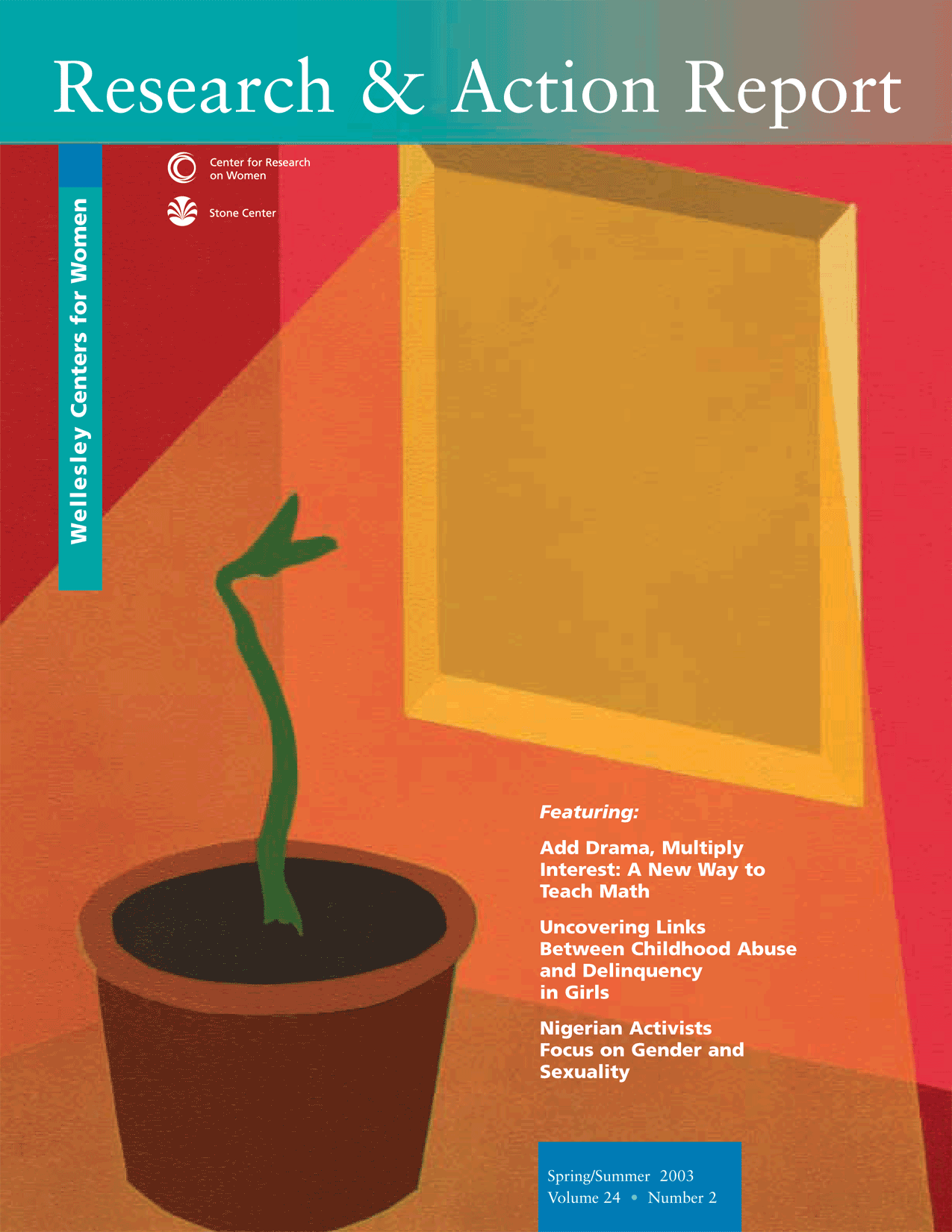Research & Action Report Spring/Summer 2003
Making mathematics interesting to young children has been an ongoing challenge faced by parents, teachers, and other education professionals for years. The problem is that children are asked to do abstract mathematical activities that have little intrinsic meaning for them. As a result, children often remain disengaged. Even the attempts to bring in “relevant” or “real world” examples—such as how many cookies each child will get or how long would you have to wait in line—are still not compelling enough to engage a young mind.
The answer may lie in the ancient art of storytelling. Experts have begun to realize that in order to place mathematics in a meaningful
context, the material should be rich in such dramatic elements as character development, plot, surprise, conflict, and suspense. This is where storytelling comes in.
| Casey and her team of scholars and elementary-school teachers developed the six-book series ‘Round the Rug Math: Adventures in Problem Solving, published in 2002 by Wright Group/McGraw-Hill. |
WCW researcher Sumru Erkut heads a team evaluating innovative supplementary mathematics materials that were developed by Beth Casey and colleagues in the Lynch School of Education at Boston College. These materials, which combine oral storytelling with the teaching of math, had their origins in a study group on gender equity inmath and science that met at the Wellesley Centers for Women when Casey was a WCW visiting research scholar. The study group’s interest
in equity in math and science education was coupled with Casey’s Boston College colleague Michael Schiro’s experience in storytelling in early math education to produce a successful grant application to
the National Science Foundation.
With support from the grant, Casey and her team of scholars and elementary-school teachers developed the six-book series ‘Round the Rug Math: Adventures in Problem Solving, published in 2002 by Wright Group/McGraw-Hill. The ‘Round the Rug Math program introduces mathematical thinking through storytelling and puppetry. Children are encouraged to help the characters in the story solve problems that confront them during their adventures. “When the reason for solving a
mathematical problem is intertwined with young children’s fascination with fantasy as well as their love of being playful, then they will put all their energies into solving the mathematical problem,” says Casey. Different stories in the series teach different skills. For example, “Froglets Do the Measuring” helps develop estimation skills and the concept of length.“ Sneeze Builds a Castle” fosters an understanding
of spatial relations through block building. The math becomes more complex as the stories evolve. Throughout, children are active learners as they help characters solve their problems. In addition, the stories draw on themes from many cultures, making them meaningful and accessible to all.
The evaluation team is assessing the effect of the ‘Round the Rug Math program on children’s math skills and on their interest in math.
They are conducting a field experiment in 16 kindergarten classrooms in urban and suburban school systems that have large minority populations. Classrooms are randomly assigned to either control or implementation conditions. Teachers in the implementation classrooms supplement their regular math curriculum with “Tan and the Shape Changer” from the ‘Round the Rug Math series; teachers in the control classrooms teach only the regular math curriculum. Pre- and post-test assessment tools include the triangles subtest of the Kaufman ABC battery and a measure to gauge interest in math by choice of activity during free-play time in class. Erkut, the principal investigator for the evaluation, says: “Our hypothesis is that kindergartners who have participated in the implementation classrooms will not only show greater gains in geometry, they will select “shapes” for free play more often
in the post-test than will kindergartners in the control classrooms.”
So far 230 Kindergartners from varying cultural and economic backgrounds have been interviewed. The evaluation will continue until the end of July 2003 to assess the persistence of skills and preferences over time. In the end, combining age-old storytelling and teaching mathematical concepts may be one of the answers for which educators and parents have been searching.


